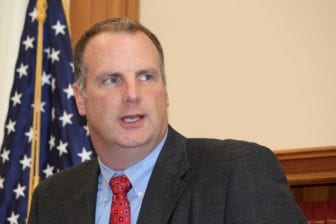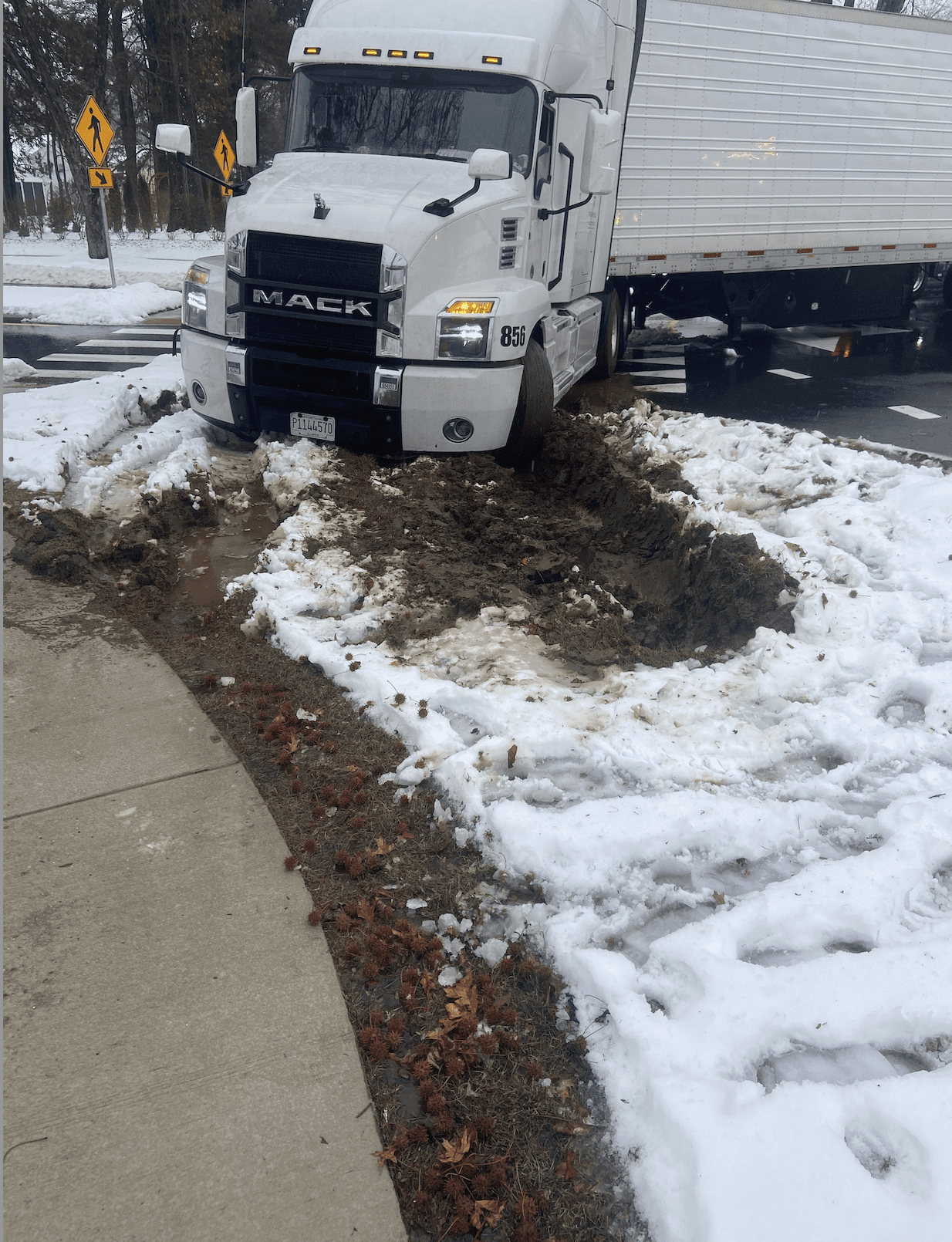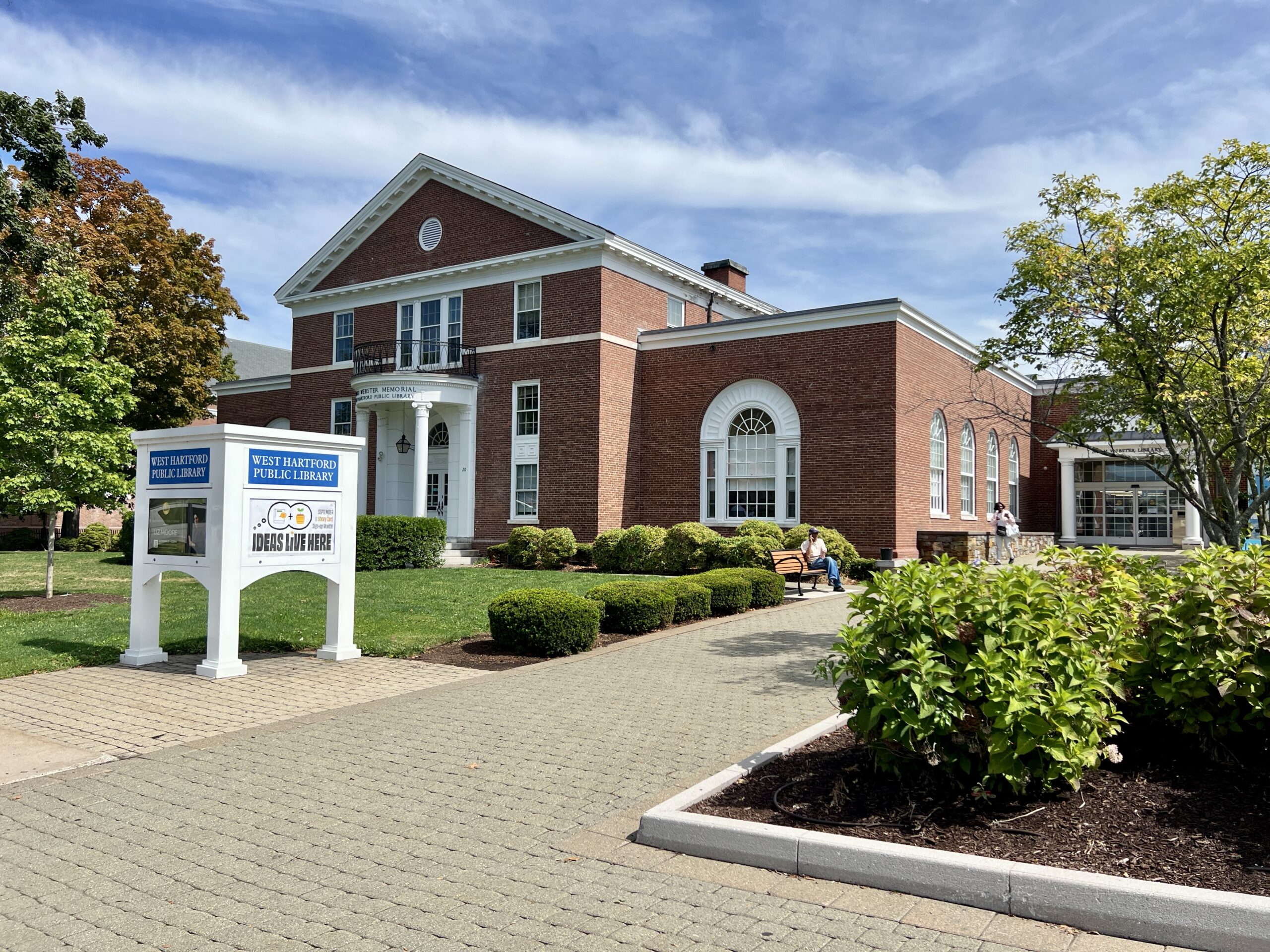Debate Not Over on Sharing Teacher Pension Costs with Towns

Audio By Carbonatix

Connecticut Conference of Municipalities Executive Director Joe DeLong. Courtesy of CTMirror.org
Municipalities dodged the bullet this year, but may eventually have to pay.
By Keith M. Phaneuf, CTMirror.org
Cities and towns have been on the defensive for the past three years, trying to avoid getting billed for a portion of the scariest expense in the state budget – the annual contribution to the teachers’ pension fund.
And while municipalities successfully blocked another attempt to bill communities this legislative session, leaders also are aware they remain in the crosshairs – and that a local payment toward this state expense may be inevitable in a few years.
The legislature agreed this year to refinance contributions to the teachers’ pension, smoothing the projected cost spike somewhat between now and 2032. [Taxpayers between 2033 and 2049, though, will have to make up the deferred payments plus an effective interest charge.]
But even with this change, the contribution to the teachers’ pension will remain one of the largest line item in the state budget and costs still will rise – albeit in a more controlled fashion – for years to come.
“I don’t think this is the last we’ve heard of this idea,” Joe DeLong, executive director of the Connecticut Conference of Municipalities, said. “But I hope this year was the last time we deal with it without having a serious conversation, without having all of the players at the table trying to come up with a serious solution.”
Former Gov. Dannel P. Malloy and current Gov. Ned Lamont proposed very different cost-sharing systems in 2017 and 2019, respectively, but both had one key element in common, DeLong said. That was that municipal leaders played no role in developing the concept, and only could react to a system many felt was unfair.
Ridgefield First Selectman Rudy Marconi, president of the Connecticut Council of Small Towns, said he also is skeptical that legislators and governors are done trying to shift pension costs onto municipalities.
But, like DeLong, Marconi said the cost-shift only would be harmful to taxpayers if it’s not part of a more wholistic analysis of state and local finances.
“Obviously we don’t want to have to raise local property taxes, but until somebody builds a better mousetrap, we have to rely on that,” when state expenses are transferred onto towns, he said.
The $1.3 billion Connecticut must contribute this fiscal year to the teachers’ pension represents about 7 percent of all General Fund spending. Contributions into all pension and retirement programs combined with payments on bonded debt eat up nearly 30 percent of the budget – roughly three times what they consumed 20 years ago.
Connecticut’s pension funds suffer from more than seven decades of inadequate contributions between 1939 and 2010.
Malloy, who took office in 2011 and tried to raise awareness of the pension debt problem, first proposed sharing teacher pension costs with municipalities in 2017, asking communities to cover one-third of all the total bill – more than $400 million per year.
Municipal leaders fought back vociferously, arguing the state dramatically boosted teacher pension costs through its fiscal irresponsibility, and therefore should bear the cost of fixing it.
“We didn’t break it, why should we buy it?” Coventry Town Manager John Elsesser, former president of the Connecticut Council of Small Towns tweeted when Malloy first proposed cost-sharing.
But Malloy argued teachers’ pensions reflect the salaries they earn while on the job, and those salaries are negotiated by municipal school boards. He also said the current system is highly regressive.
To make his point, the former governor cited Greenwich – one of Connecticut’s wealthiest municipalities – and New Britain, which is one of its poorest.
Both have similar populations and school enrollment totals, but Connecticut spent $24 million more last year to cover pension costs for retired Greenwich teachers than for those from New Britain.
In simple terms, Greenwich can afford to pay much higher salaries than New Britain can, yet it gets more help from the state on a per capita basis to provide pensions for its retired teachers.
But municipal leaders have argued things aren’t that simple. Some have argued legislators should consider scaling back the pension benefits offered to new teachers.
The binding arbitration issue
DeLong said until legislators recognize that arbitration needs reform, that municipal budgets already are stained, that urban centers can’t compete economically, and that Connecticut is losing population, things won’t improve.
Local school boards and teachers’ unions frequently take their salary negotiations to binding arbitration – a process established by the legislature, and one municipal leaders have argued for years is skewed in teachers’ favor.
“They think there’s a different reality,” he said. “They think home values are holding just fine and there are plenty of jobs and we just have to cobble together a [state] budget every year and our wonderful way of life will just continue into infinity.”
But Sen. Cathy Osten, D-Sprague, co-chairwoman of the legislature’s Appropriations Committee, said the binding arbitration system is fair – and municipalities should accept some portion of paying for local teachers’ pensions.
“Binding arbitration is fine the way it is,” she said, adding that “It’s not the state that establishes the cost of the pension. It’s the local board of education. … Having the towns, the employers, be a partner in paying pensions for teachers is the way to go.”
Osten also noted that Lamont and the 2019 legislature have moved dramatically away from the cost-sharing that Malloy initially proposed.
The proposal they considered this year, but ultimately scrapped, only would have required cities and town to pay a small fraction of the contribution, a portion of the “normal cost.”
This is an actuarial term referring to the amount that must be set aside annually to cover the future pensions of present-day teachers.
According to Comptroller Kevin P. Lembo’s office, the “normal cost” represents just 15 percent of the annual payment.
The remaining 85 percent of the annual contribution – and the part that’s projected to skyrocket over the next decade-and-a-half – involves covering Connecticut’s past fiscal sins. This would remain the state’s responsibility.
And Lamont didn’t even ask towns to cover the full normal cost, a little less than $200 million per year. Under his plan, towns would collectively pay a maximum of $49.2 million by 2021.
Osten and Lamont aren’t the only ones who have expressed support for asking communities to share some portion of the cost.
House Speaker Joe Aresimowicz, D-Berlin and House Majority Leader Matt Ritter, D-Hartford, and Senate President Pro Tem Martin M. Looney, D-New Haven, all have expressed a willingness to ask communities to pay a modest portion of this “normal cost.”
But local leaders respond this only would be a starting point.
The state budget has struggled with deficit projections frequently since the last recession ended nine years ago, and legislators and governors have a track record of not keeping their promises to towns, municipal leaders say.
Deputy House Minority Leader Vincent J. Candelora, R-North Branford, an opponent of passing pension costs onto towns, said municipalities are right to fear the state will ask local taxpayers to pick up more costs over time.
“The proposals we’ve seen haven’t come with spending reforms,” Candelora said. “If we’re going to shift the cost, we need to reform policies” like binding arbitration. “But too many legislators are afraid of the next election cycle.”
Reprinted with permission of The Connecticut Mirror. The author can be reached at [email protected].
Like what you see here? Click here to subscribe to We-Ha’s newsletter so you’ll always be in the know about what’s happening in West Hartford!



